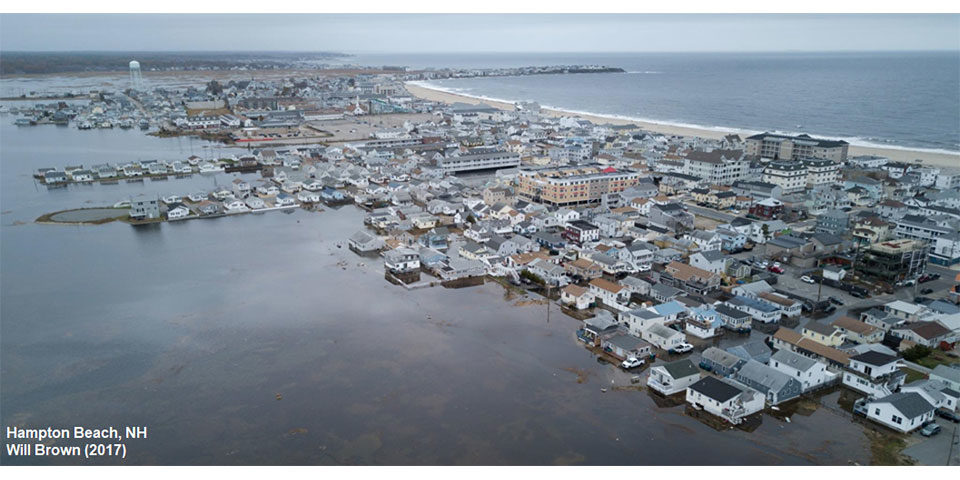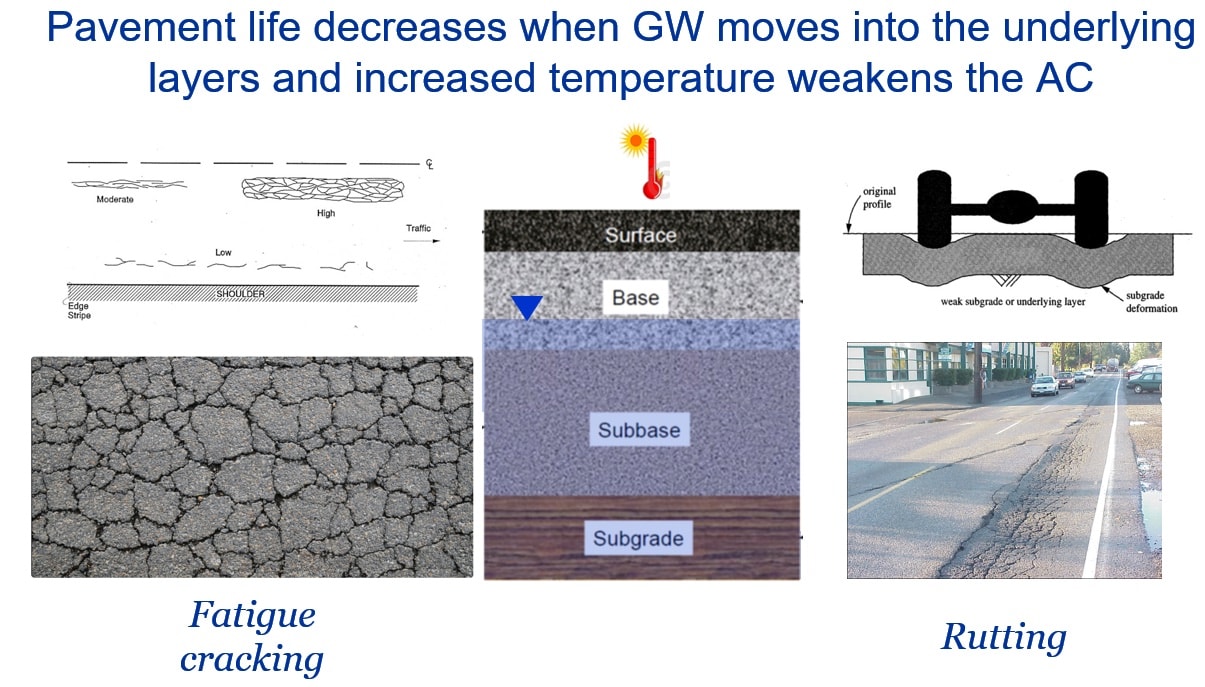What do Rising Groundwater & Sea-level Rise Have in Common?
What Do Sea Level and Rising Groundwater Have in Common?
The levels of both will rise with climate change, and this rise is expected to accelerate. Sea levels are projected to rise 5.3 feet under the middle emissions scenario and 6.5 feet under the high emissions scenario in the northeastern part of the United States by the end of the century (1% probability) (Wake et al., 2019).

Rising Groundwater Is A Problem In Coastal Lowlands
This sea-level rise will also cause coastal groundwater to rise (Befus et al. 2020). This is a problem in coastal lowlands, where groundwater is already close to the land surface. Underground infrastructure, coastal roads, stormwater drains, historic structures, coastal ecosystem resilience, and water quality all may be adversely affected when groundwater rises. In addition, sea walls or other structures designed to keep surface water back will not stop rising groundwater from inundating the land surface behind the barrier.
Sea- level-rise-induced groundwater effects
These sea-level-rise-induced groundwater effects have been projected to occur 3 to 4 times farther inland than tidal surface-water inundation (Knott, Jacobs, et al., 2018). In California, rising groundwater is projected to flood land area 50 to 130 meters (160 to 430 feet) inland in low-lying communities such as those around San Francisco Bay (Befus et al., 2020). Coastal cities such as Boston, which was originally built on top of filled wetlands, are particularly vulnerable to rising groundwater.
A study in Honolulu has shown that urban areas along the coast are subject to flooding from three mechanisms (Habel et al., 2020):
- direct marine flooding
- storm-drain backflow,
- groundwater inundation
Adaptation plans addressing coastal flooding from sea-level rise
To be successful, adaptation plans addressing coastal flooding from sea-level rise and coastal storms must also consider rising groundwater.
Impacts from rising groundwater will occur across sectors.
In the transportation sector, rising groundwater will weaken the underlying base layers of roads resulting in premature pavement failure (Knott, Daniel, et al., 2018). In the water resources and drinking water sectors, rising groundwater has the potential to increase saltwater intrusion into coastal aquifers and impact groundwater quality. As groundwater rises, the separation distance between leach fields and the water table decreases, reducing contaminant removal effectiveness. In low-lying areas, septic systems may completely fail.
Regulations controlling the cleanup of hazardous waste disposal sites typically define a specific water-table depth deemed safe to prevent groundwater contamination. With rising groundwater, these requirements may no longer be satisfied, resulting in groundwater and surface-water quality degradation. Ecosystems will also be affected as rising groundwater will cause freshwater wetlands to expand and/or transition with changing water depths and salinities. Wetlands legislation will have to change to protect these important resources to maintain their important flood control and fisheries functions. (Wake et al., 2019)
If you want to learn more about how climate change will affect your community’s infrastructure and water resources, please contact us.
References:
Befus, K.M., Barnard, P.L., Hoover, D.J. et al. Increasing threat of coastal groundwater hazards from sea-level rise in California. Nat. Clim. Chang. 10, 946–952 (2020). https://doi.org/10.1038/s41558-020-0874-1
Habel, S., Fletcher, C. H., Anderson, T. R., & Thompson, P. R. (2020). Sea-Level Rise Induced Multi-Mechanism Flooding and Contribution to Urban Infrastructure Failure. Scientific Reports, 10(1), 1–12. https://doi.org/10.1038/s41598-020-60762-4
Knott, J. F., Jacobs, J., Daniel, J. S., & Kirshen, P. (2018). Modeling Groundwater Rise Caused by Sea-Level Rise in Coastal New Hampshire. Journal of Coastal Research, 35(1), 143–157. https://doi.org/10.2112/JCOASTRES-D-17-00153
Knott, J. F., Daniel, J. S., Jacobs, J. M., & Kirshen, P. (2018). Adaptation Planning to Mitigate Coastal-Road Pavement Damage from Groundwater Rise Caused by Sea-Level Rise. Transportation Research Record, Journal Article, 0361198118757441. https://doi.org/10.1177/0361198118757441
Wake, C., Knott, J. F., Lippmann, T., Stampone, M., Ballestero, T., Bjerklle, D., Burakowski, E., Glidden, S., Hosseini-Shakib, I., & Jacobs, J. (2019). New Hampshire Coastal Flood Risk Summary Part 1: Science. University of New Hampshire. https://doi.org/10.34051/p/2019.1


